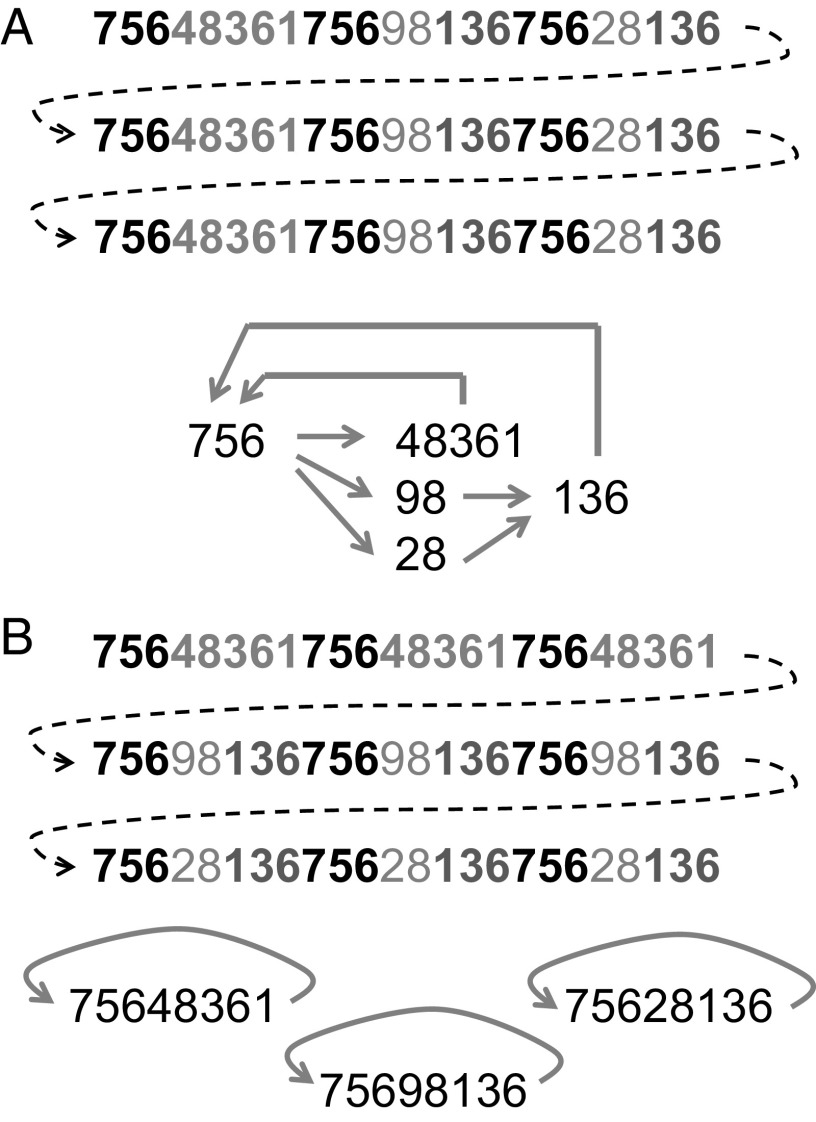Fig. 1.
Data input in the form of three strings, and the network that is constructed as a result of acquiring and processing this input using the learning mechanisms and parameter set described in the text. (A) Each data string of 24 characters is composed of three nonidentical subsequences of eight characters that share some common segments (highlighted using the same shade of gray). The three strings are identical in this case, so labeling each subsequence of eight characters as A, B, and C, respectively, allows describing the structure of the input as ABC ABC ABC. (B) The same input as in A is distributed differently over time, which can be described in short as AAA BBB CCC. This input leads to a completely different network structure due to fixation of A, B, and C as long eight-character chunks. The weights of the nodes and the links of the networks are not shown in the figure, but all of them exceed the fixation threshold of 1.0, as the weight-increase parameter was set to 0.4 per occurrence.

